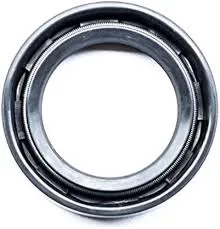8 月 . 29, 2024 09:50 Back to list
Car Spark Plug Replacement Guide | Tips & Tricks for DIY Maintenance
Understanding Car Spark Plug Replacement
Spark plugs play a crucial role in the performance and efficiency of an internal combustion engine. They are responsible for igniting the air-fuel mixture, leading to combustion, which powers your vehicle. Over time, spark plugs wear out and can significantly affect your car's performance, fuel efficiency, and emissions. Therefore, understanding when and how to replace your spark plugs is essential for every vehicle owner.
When Should You Replace Spark Plugs?
Most manufacturers recommend changing spark plugs every 30,000 to 100,000 miles, depending on your car's make and model. High-performance engines or those that run in harsh conditions may require more frequent replacements. Signs that your spark plugs may need to be replaced include difficulty starting the engine, rough idling, poor acceleration, decreased fuel efficiency, and the engine misfiring. If you notice any of these symptoms, it may be time to inspect and replace your spark plugs.
How to Replace Spark Plugs
Replacing spark plugs is a task that many car owners can perform themselves with the right tools and knowledge. Here’s a step-by-step guide to help you through the process
1. Gather Tools and Materials You will need new spark plugs, a spark plug socket, ratchet, extension, torque wrench, and possibly a gap gauge to ensure the new plugs meet manufacturer specifications.
car spark plug replacement

2. Preparation Start by ensuring your engine is cool. Disconnect the negative battery terminal to prevent any electrical issues while you work. It is also advisable to clean the area around the spark plug openings to prevent debris from entering the combustion chamber.
3. Remove Old Spark Plugs Using the spark plug socket, carefully unscrew the old spark plugs from the engine. Be gentle to avoid damaging any surrounding components. As you remove each plug, take note of its condition—excessive wear or deposits can indicate deeper issues.
4. Install New Spark Plugs Check the gap on the new spark plugs using a gap gauge and adjust if necessary. These plugs should be installed by carefully hand-tightening them first. Once they are snug, use your torque wrench to tighten them to the manufacturer’s specifications.
5. Reconnect Everything After replacing all the spark plugs, reconnect the ignition wires or coils, and the negative battery terminal. Start your engine to ensure everything is functioning properly. Listen for any unusual noises and check for any warning lights on the dashboard.
Conclusion
Regularly replacing spark plugs is essential for maintaining your vehicle's performance and efficiency. Whether you choose to do it yourself or take your car to a professional mechanic, being aware of the signs of worn spark plugs and knowing how to replace them can save you time and money. Keeping your spark plugs in good condition will contribute to a smoother-running vehicle and improved fuel economy, ensuring a better driving experience overall.